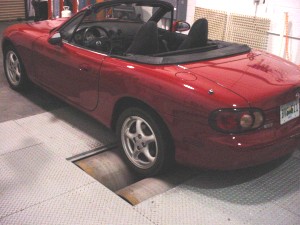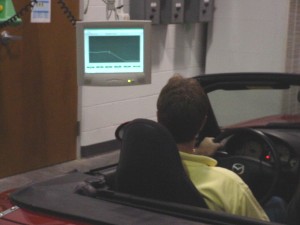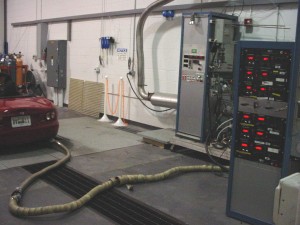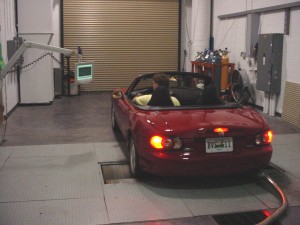How Vehicles Are Tested
Fuel economy is measured under controlled conditions in a laboratory using a series of tests specified by federal law. Manufacturers test their own vehicles—usually pre-production prototypes—and report the results to EPA. EPA reviews the results and confirms about 15%–20% of them through their own tests at the National Vehicles and Fuel Emissions Laboratory.
Estimating MPG with Laboratory Tests
In the laboratory, the vehicle's drive wheels are placed on a machine called a dynamometer. The "dyno" simulates the driving environment much like an exercise bike simulates cycling.
Engineers adjust the amount of energy required to move the rollers to account for wind resistance and the vehicle's weight.

Each cycle specifies the speed the vehicle must travel during each second in the test.
Photo: The driver watches a display that shows his driving speed compared to the specified cycle.

Measuring Fuel Use
For vehicles using carbon-based fuels (e.g., gasoline, diesel, natural gas, etc.), a hose is connected to the tailpipe to collect the engine exhaust during the tests.
The carbon in the exhaust is measured to calculate the amount of fuel burned during the test. This is more accurate than using a fuel gauge.
A different method is used for vehicles that run on non-carbon fuels, such as fuel cell vehicles and electric vehicles.




